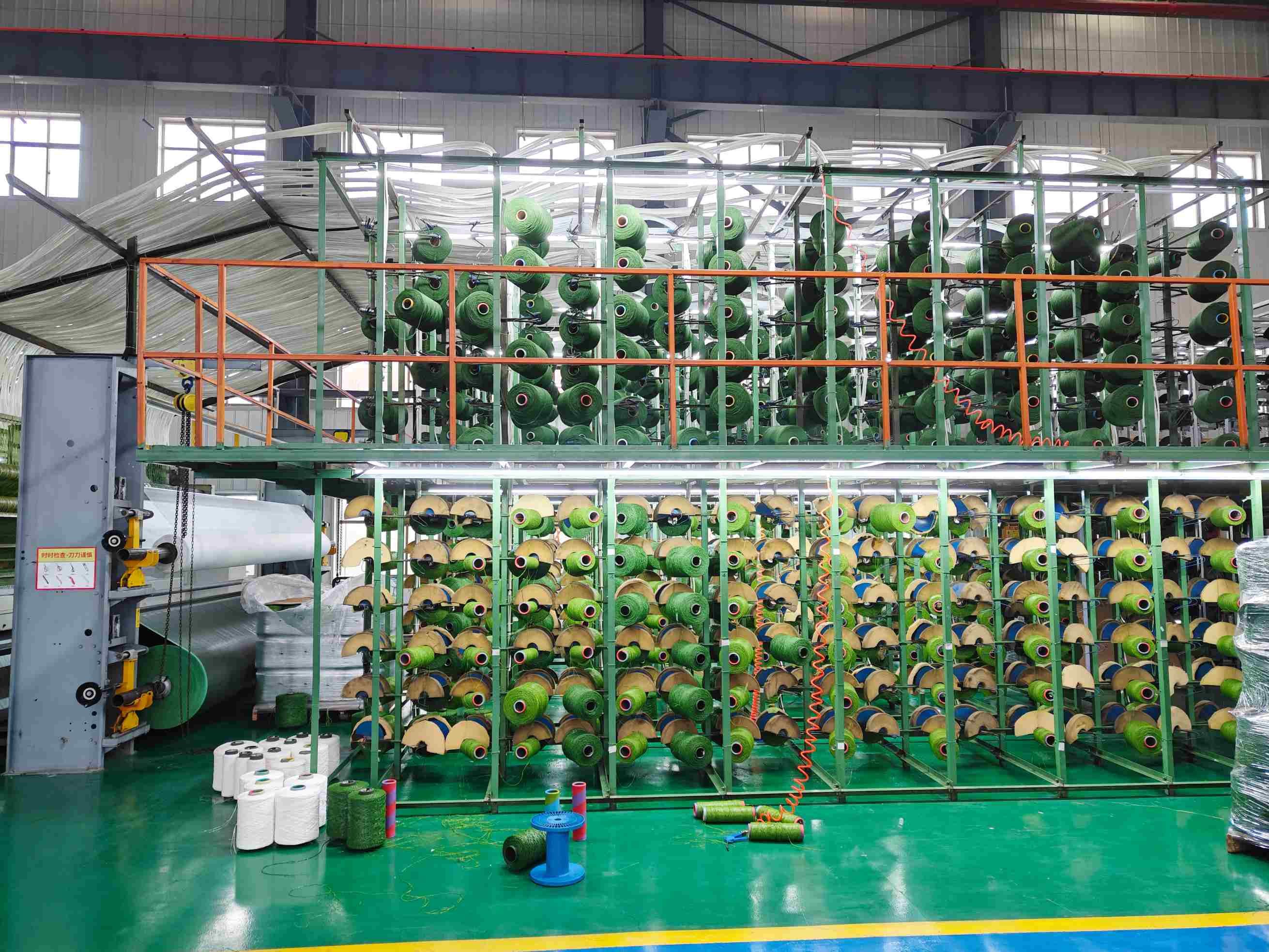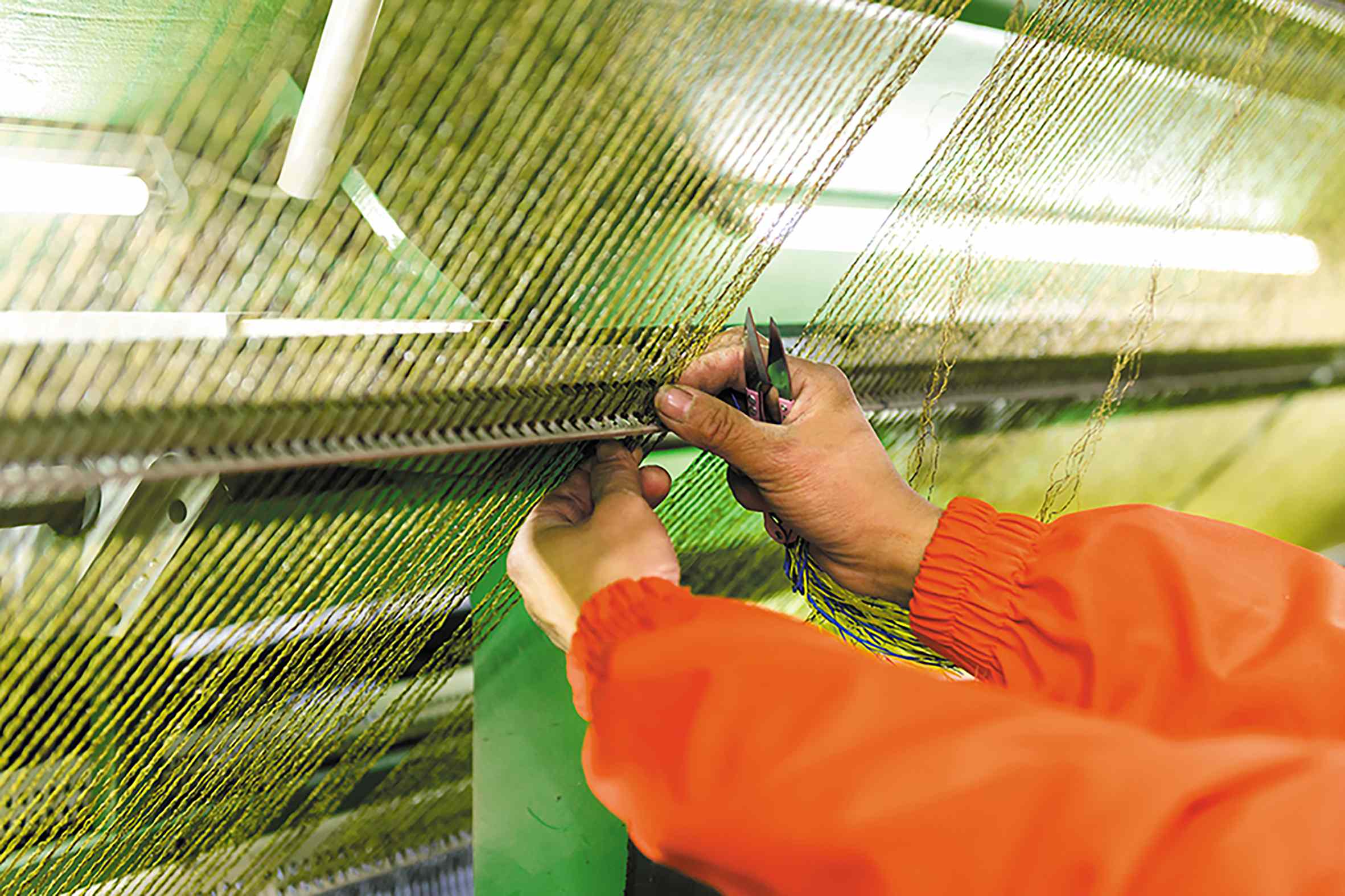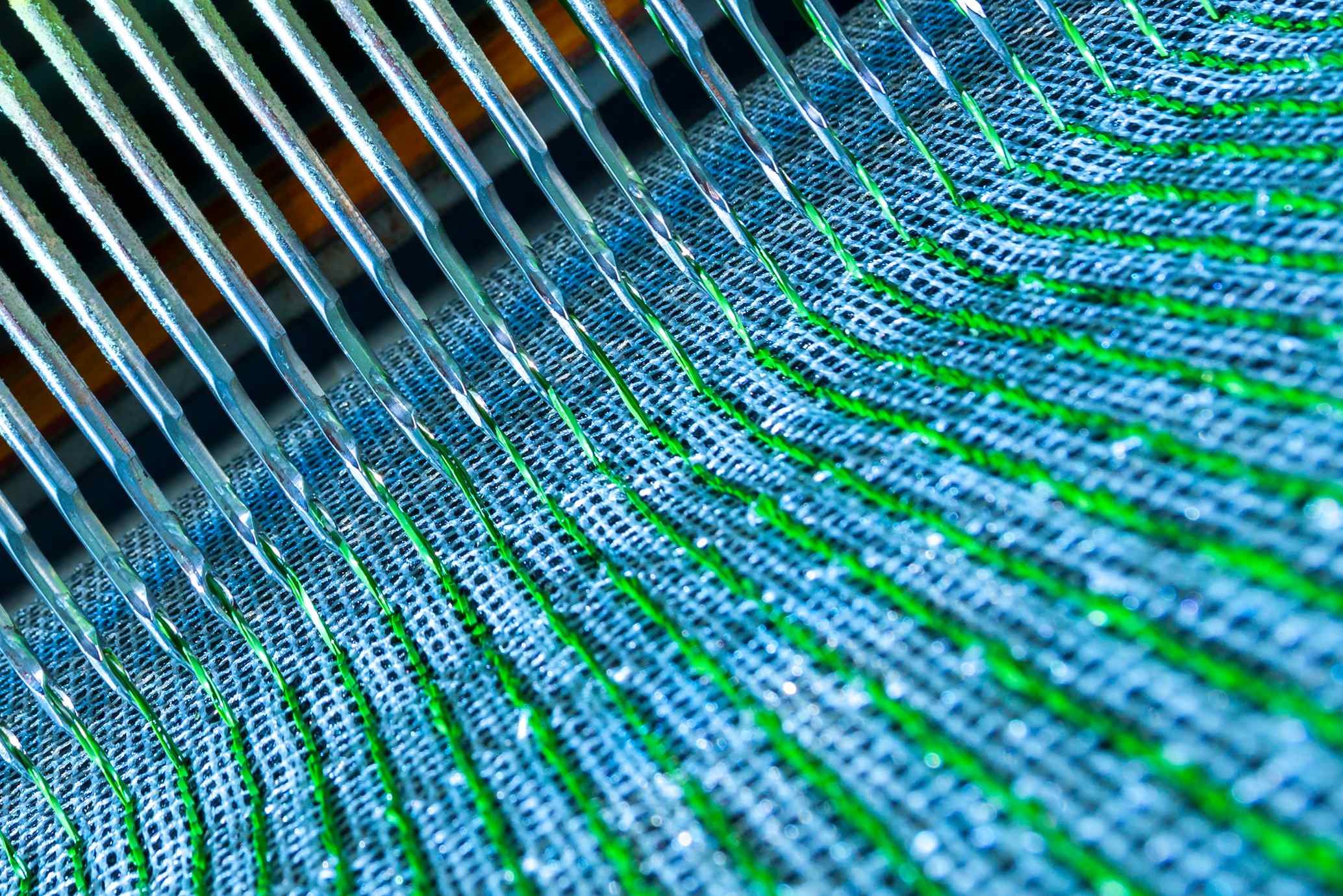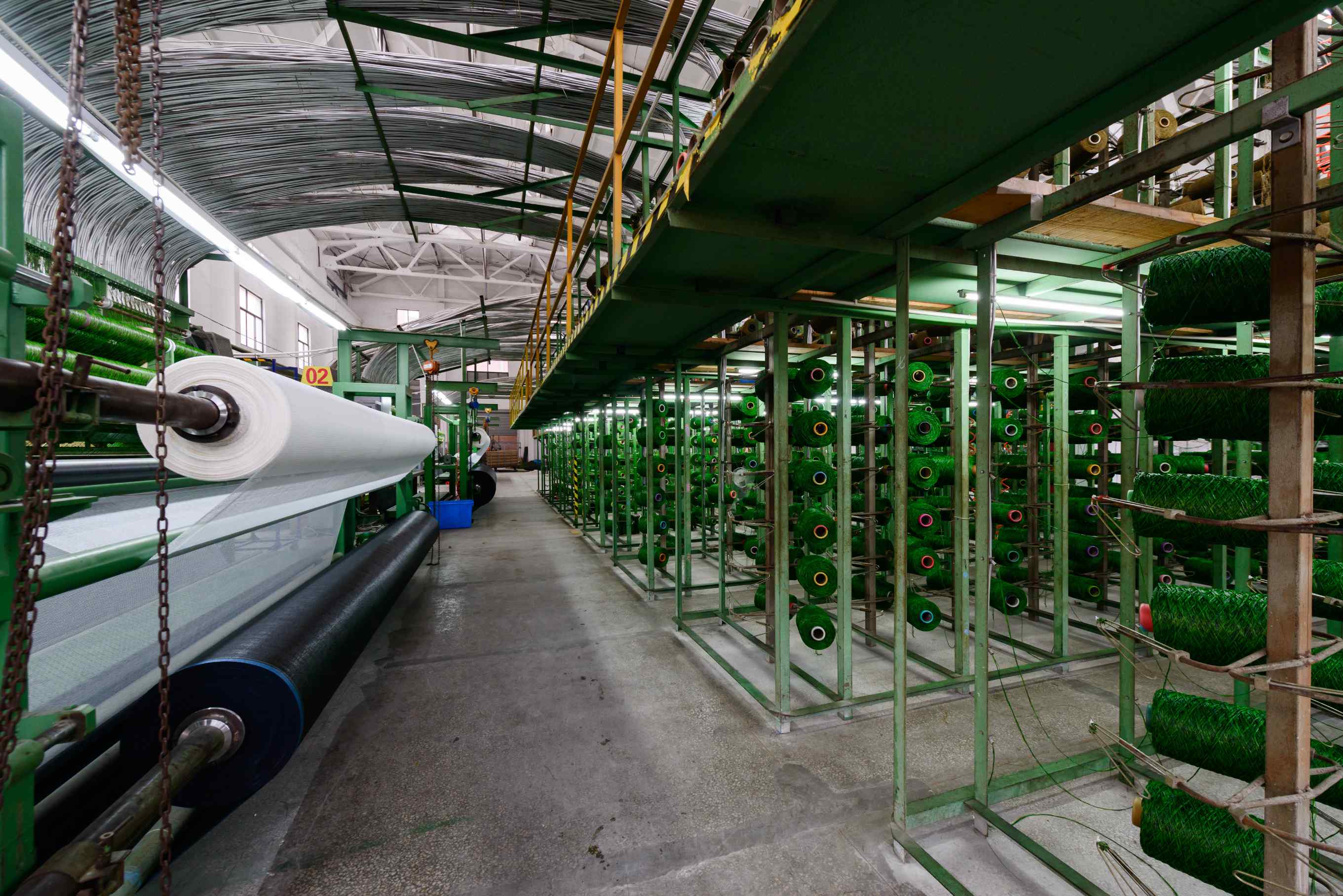The Intricate World of Textile Manufacturing
Categories:News Author: author
Textile manufacturing is a fascinating and complex industry that combines artistry with advanced technology. As depicted in the images, it encompasses a series of processes that transform raw materials into the fabrics we use in our daily lives.
The first step often involves the preparation of yarns. In the large - scale factories shown, numerous spools of vibrant green and other - colored yarns are neatly arranged. These yarns are the building blocks of fabrics. They can be made from natural fibers like cotton, wool, and silk, or synthetic ones such as polyester and nylon. Each type of fiber has its unique properties, affecting the texture, durability, and appearance of the final fabric.

Skilled workers play a crucial role in this process. In one image, a worker in an orange jacket is carefully handling the yarns with scissors. This manual intervention ensures that the yarns are in the right condition for further processing. Such hands - on work, combined with automated machinery, is a hallmark of textile manufacturing.

The weaving process is where the magic truly happens. Looms, the key equipment in this stage, interlace the warp and weft yarns to create fabric. The close - up image of the woven fabric showcases the precision required. The interlacing pattern determines the fabric's structure, whether it's a simple plain weave, a more complex twill, or an elaborate satin weave.

Textile manufacturing also has a significant economic and cultural impact. It provides employment opportunities across the globe, from rural areas where raw materials are sourced to urban centers with advanced manufacturing facilities. Culturally, textiles have been a medium of expression for centuries, with traditional patterns and techniques passed down through generations.

In conclusion, textile manufacturing is a dynamic industry that marries human skill with technological innovation. It continues to evolve, driven by consumer demand for new styles, sustainable materials, and advanced functionality, ensuring that the fabrics we wear and use remain an integral part of our lives.

